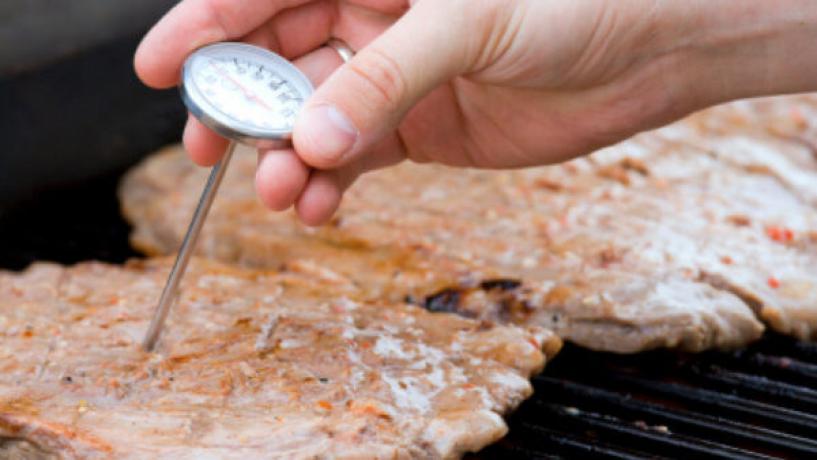
Probe thermometers are one of the most important pieces of equipment in a commercial kitchen. Temperatures need to be checked when food is being prepared, cooked, cooled, reheated, frozen or defrosted. Poor time and temperature control is one of the leading causes of food-borne illness outbreaks throughout Australia.
Because thermometers are so important for protecting your customers health, it's important to calibrate them regularly. If the thermometers are reporting the wrong temperatures, the food you're preparing may not be cooked to the correct temperature and you could cause your customers to get severely ill.
What is Thermometer Calibration?
Thermometer calibration is the act of verifying whether your thermometers are reporting the correct temperature. It's a simple process that takes just a few minutes to do. Probe thermometer calibration should be listed as a regular activity in your Food Safety Plan.
There are two methods for thermometer calibration - hot calibration and cold calibration.
Hot Calibration
The steps for hot calibration are as follows:
Step 1: Boil tap water and pour into a suitable container (such a mug or beaker)
Step 2: Place your thermometer into the container
Step 3: Wait for 2 minutes
Step 4: Check that the temperature is between 99°C and 101°C (210°F to 214°F)
Step 5: If the temperature isn't correct, adjust your thermometer to the correct temperature whilst it's still in the water. If you can't manually adjust your thermometer, arrange for professional re-calibration or a replacement.
Cold Calibration
The steps for cold calibration are as follows:
Step 1: Mix 50% crushed ice and 50% water in a container (such as a mug or beaker)
Step 2: Wait for 5 minutes so that the heat distributes evenly
Step 3: Place your thermometer into the container
Step 4: Wait a further minute
Step 5: Check that the temperature is -1°C to 1°C (30°F to 34°F)
Step 6: If the temperature isn't correct, adjust your thermometer to the correct temperature whilst it's still in the water. If you can't manually adjust your thermometer, arrange for professional re-calibration or a replacement.
Cold calibration is a safer method of thermometer calibration than hot calibration as there is less risk of getting burnt.
If you're unsure about where to locate your Food Safety Plan, or you need help with probe thermometer calibration, be sure to check with your Food Safety Supervisor as they've learnt these skills as part of their training.




